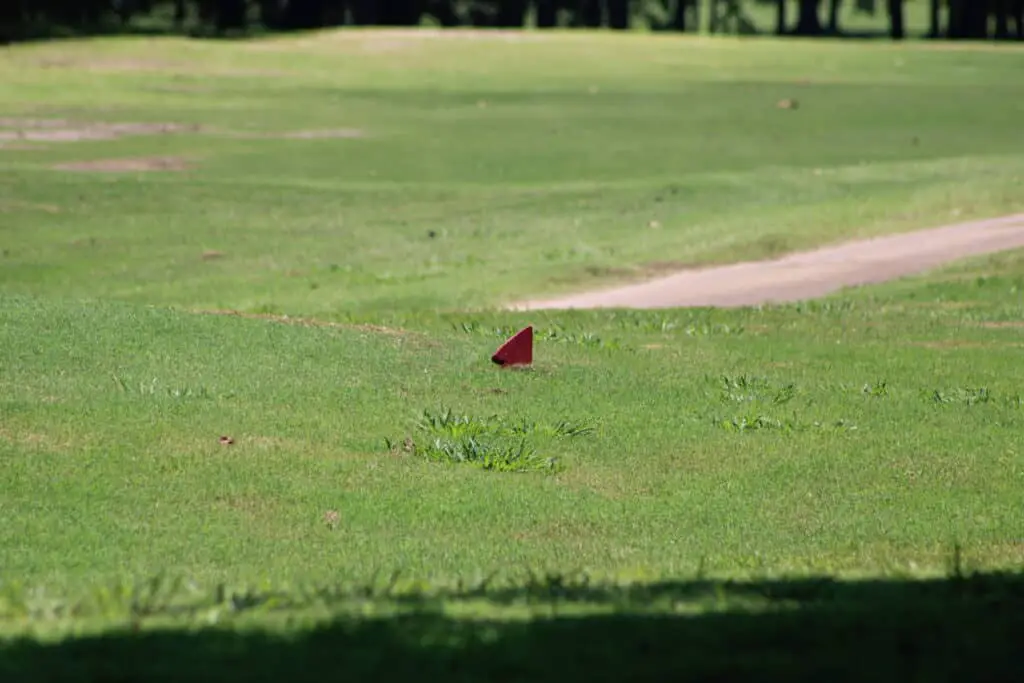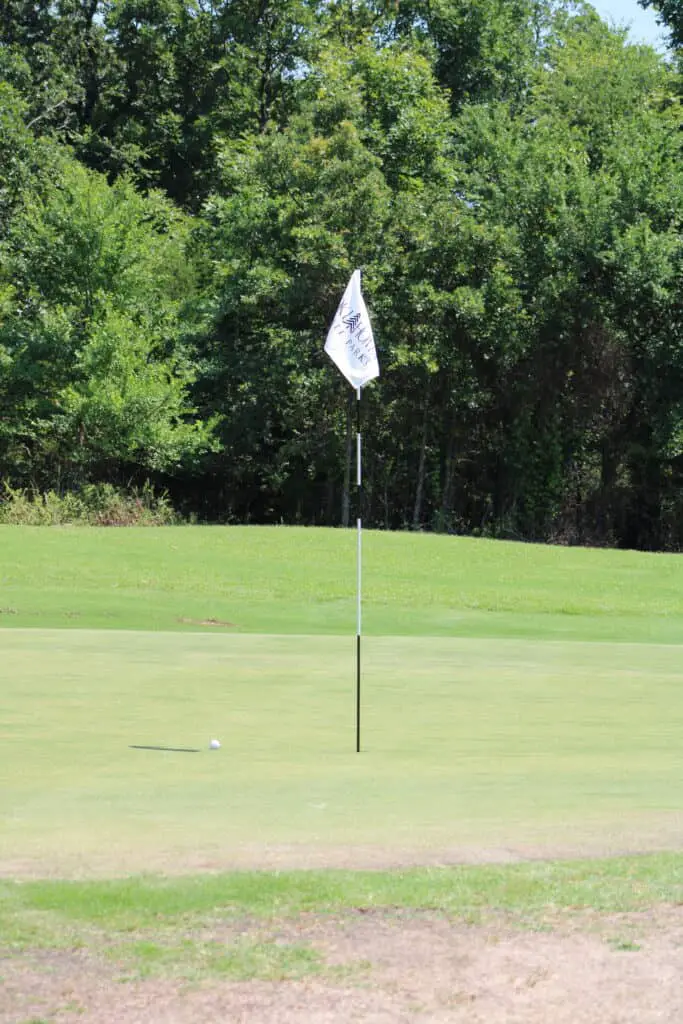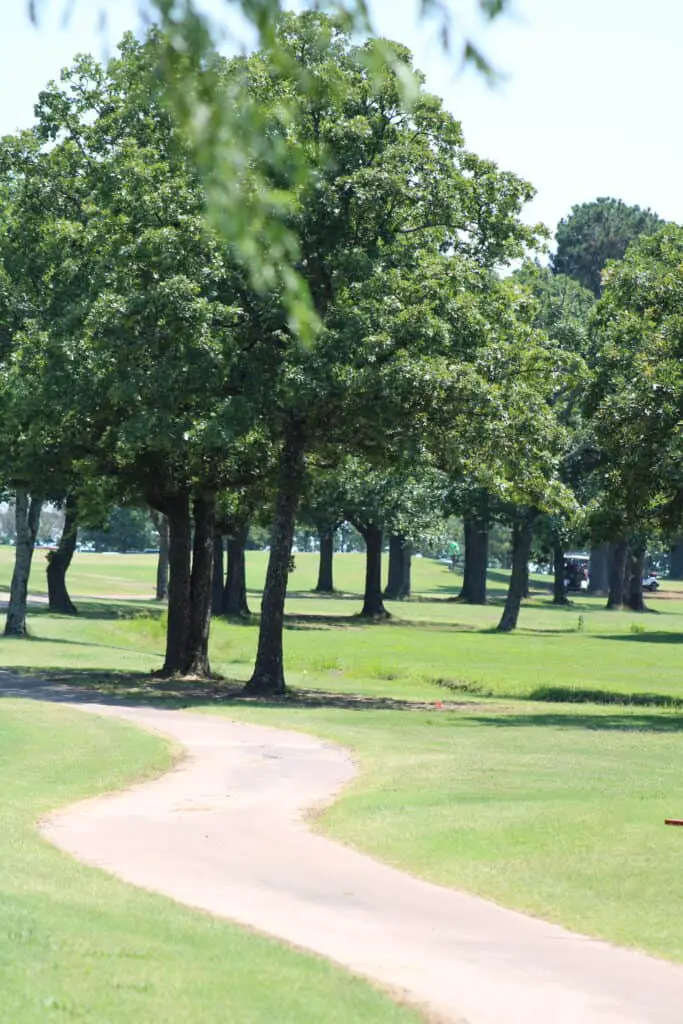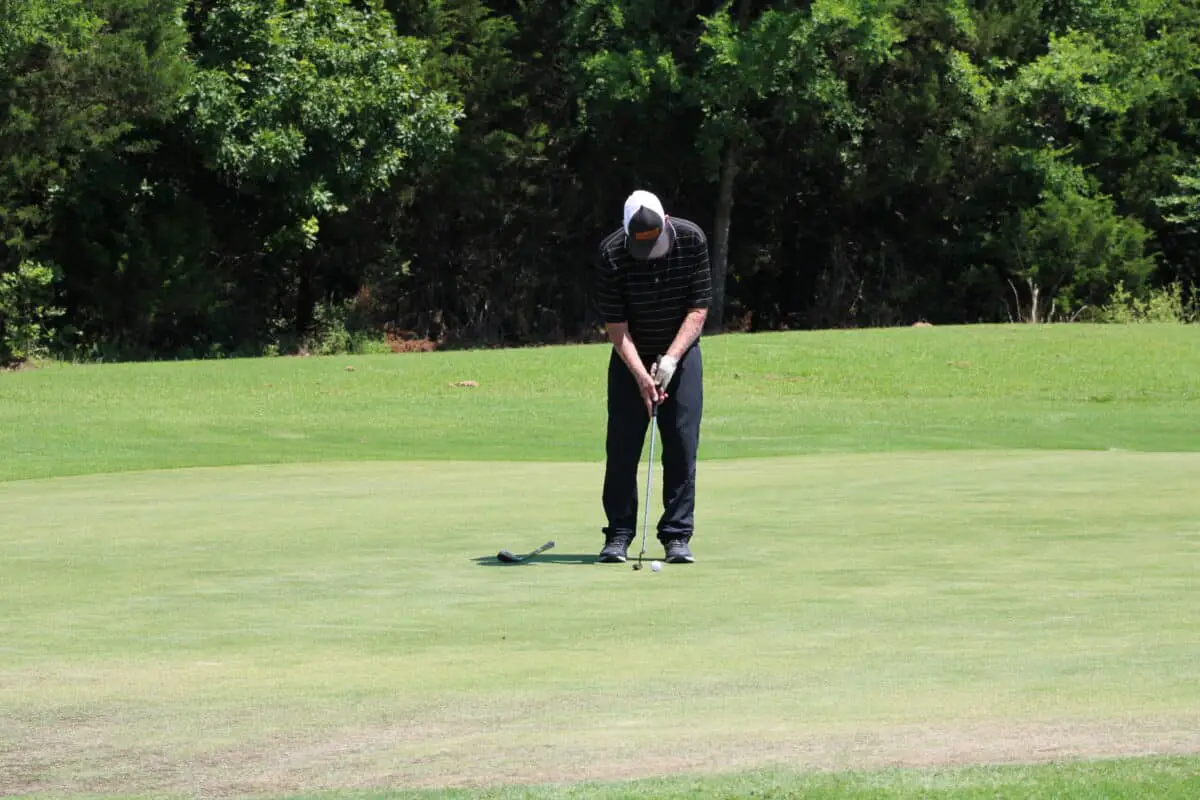Aside from everything that can and will go wrong in golf, the slice and the hook are probably the two most common frustrations that amateur and professional golfers face during their careers on the golf course.
The slice is a ball that moves sharply from right to left for a right handed golfer (or left to right for left handed golfers), and the hook is the opposite, moving sharply left for a right handed golfer (or sharply right for left handed golfers) . Slices and hooks often get in trouble out of bounds, in the water, or on the next fairway!
This article will focus on the dynamics of both shots, the slice vs hook, what causes the ball to spin laterally, and the fixes and methods you can apply to eliminate them or prevent them from destroying your game and taking up lawn bowls!
The Basics Of The Slice
A slice sounds very much like what it is, a thin cut across the ball that imparts a left-to-right spin and the ball curves in a banana-shaped flight and the inevitable expletive or two! The golf slice, vs hook, has several causes, and sometimes one or two are in play simultaneously, but the result is the same.

The push slice is caused when the clubface is open at impact, i.e., facing right of the target line instead of being square and that point of contact on the ball causes sidespin in the flight, leading to the characteristic right-to-left shot shape.
The slice occurs with drivers, woods, and irons and is not endemic to a particular golf club. Beginner golfers struggle with the slice, as does the avid golfer. So no amateur golfer need to get their head down just because they are not hitting the ball straight.
Swing flaws tend to show more with the longer clubs than the shorter ones, simply because the shorter irons and wedges are much easier to swing and control. So finding that straight shot with the longer clubs is hard for amateur golfers.
The big brother of the push slice, the controlled fade, is the shape that many golfers seek and, like the controlled draw ( the bigger sister of the hook), is a skill in shot-shaping that professional golfers spend countless hours perfecting- and even they get it wrong sometimes.
The Basics Of The Hook
Like its cousin, the golfers hook is caused when the clubface is closed or shut at impact, and this imparts the left-to-right spin on the golf ball, causing it to ‘hook to hell and gone. As with the slice, there are several causes for the hook, and we will look at those later in this article.
The hook happens when the club face faces the left of the target line at impact rather than being aligned to the target, with the shoulders often closed or pointing right of the target line rather than at the target line. You can even experience hitting the ball squarely off the tee box with the club head, and yet still find the ball curves due to the open club face.

Hooking the ball can happen with any golf club, and like the slice, it is more likely to occur with clubs that are longer where the player has less control than with shorter irons and wedges, but the pull hook and the slice aren’t fussy and can happen with even the shortest clubs.
Which Players Are The Most Affected By The Hook And Slice
High-handicap players are particularly susceptible to these irreverent ball flights as their setup and golf swing mechanics aren’t correct. Even players in the mid-teen handicap levels and even high single figure players sometimes hook and slice, but often those reasons are not the same as those for high-handicap players.
Many weekend players struggle to eliminate the sliced or hooked shot from their game, spend time with coaches, and use lesson time to analyze the causes of the slice and hook.
They may work on their grip and then move to the swing club path, position their feet and shoulders relative to the target line and clubface, and see where and what works to either reduce the specific issue or eliminate it.
But, it does go wrong when it goes wrong, and even the pros are not immune from the slice or hook occasionally creeping into their swing.
Anyone that has watched pro golf on TV has been privy to some pretty awful slices and some drastic hooks by some of the world’s best, which makes us as the weekend golfer feel just that much better about when we do it!
Let’s take a more in-depth look at the causes of the slice and the hook and examine some of the ‘fixes’ that can help you sort this out in your game, starting with the slice.
Understanding The Golf Slice
Since the game of golf was invented, you can be sure that early golfers struggled and cursed the same as modern ones when that ball started out as a straight shot and then cut right into the gorse.
From that day, you can also be sure that aspiring players and coaches of the day all started to ponder the mystery of ball flight on their golf shots and the possible reasons why the golf ball could deviate so severely from its intended path during your golf game.
Of course, with today’s technology and massive advances in understanding ball flight dynamics and the more intricate mechanics of the golf swing, it is easier to diagnose the causes of the slice than ever before.
While we know that the cause of the slice is the open clubface at impact, this can be the result of several other factors like a weak grip, thumb position, swing path, shoulder alignment, target alignment, and the over-the-top swing creating a club path that your brain wants to turn into a pull slice.
Your Golf Grip Could Be Causing A Slice
The most common cause of the slice in golf is the incorrect position of the hands on the golf club. When the hands are rotated too far to the left (for a right handed golfer, or right for a left handed golfer), the clubface is open at the point of impact, which leads to the slice.

This is known as the weak grip and is a prevalent cause of the slice in beginners and higher handicap players.
This often happens when players starting to learn the game aren’t given proper instruction on the grip and either learn it online or from golfing buddies that can’t play. So the fundamentals of the proper golf grip are never acquired.
The remedy is to rotate the hands to the right or away from the target, and this will help close the clubface at impact and prevent the slice or at least reduce its severity.
The Incorrect Thumb Position On The Club
The thumb problem is linked to the grip problem that can cause a slice. Having the right thumb positioned facing straight down the shaft instead of slightly off-center to the left and down the side of the grip, as the hands come through the strike zone, they can’t close enough to get the clubface square remains open, causing the slice.
Shoulder & Feet Alignment
This is another common issue with high handicap players as they think and feel that their shoulders are aligned square to the target, but analysis often shows that the shoulder is open to the line, ie. Pointing left of the target, and this is going to create the swing path and open clubface position leading to the slice.
This can be remedied by using alignment sticks for the shoulders, hips, and feet to ensure that all are aligned square and with the target line.
Alignment and position of the feet are also critical, as an open stance where the hips and feet are facing the left of the target line will also contribute to a slice. Using alignment sticks or golf clubs at the range to get the feel of being aligned to the target will help with this issue.
The Outside-In Swing Path
Combined with the grip and alignment issues, the outside-in swing path is another dynamic that can cause a slice. Here, the club cuts across the golf ball as it moves from the outside to the inside, causing the slice.
This swing error also happens with the over-the-top swing where the golfer over rotates the shoulders or decelerates through the downswing, and either or both combined will result in an open clubface at impact.
Other factors can cause the ball to slice, such as the golf ball position in the stance, but the most common and consistent causes of the slice in golf are listed above.
How The Incorrect Flex Of Golf Shaft Can Cause A Slice
One of the non-swing mechanic-related issues that can cause a slice is the shaft flex. The shaft has to match the swing speed, and if the shaft is too stiff, it will not be able to bring the clubface back square at impact.
This leaves the clubface open, and the slice is the result.
To avoid this issue, make sure you have your swing speed checked accurately and then compare the shaft flex on your clubs to the swing speed and see if they are congruent. It is perhaps a good idea to check this first before messing with your grip and alignment.
While the alignment and grip may need work, at least you will know that your slice should finally be a thing of the golfing past once those issues are fixed.
Understanding The Golf Hook
As the open clubface at impact causes the slice, the closed clubface at mark causes the hook, and the same set of dynamics results in the slice working conversely for the hook. Closed means that the clubface is facing the right of the target line at impact, and this will cause the left-to-right spin on the golf ball creating the hook.
How A Strong Grip Can Cause A Hook
While the weaker grip will cause a slice, a stronger grip will cause the hook, and this is where the hands are rotated too far toward the target (toward the left side of a right handed golfers, or the right for a left handed golfer), and as the hands come through the strike zone, the clubface closes or rotates to the left, causing the hook sidespin.
The solution here is to weaken the grip, ie. Rotate the hands toward the right side and observe the golf ball flight results gradually; having a neutral grip will eliminate the grip as a cause of either the hook or the slice. Then, other swing mechanic factors can be examined to find the reason for either the hook or the slice.
Shoulder & Feet Alignment Can Cause A Hook
As with the slice, if the shoulders are facing to the right of the target, it will cause the player to swing around the hips, creating a closed clubface at impact. For beginners or players that struggle with the hook, once the grip has been checked, the next step in this process is to check the alignment of the shoulders.
While many players may think or feel that they are standing square to the target line, alignment sticks or using a golf shaft may indicate otherwise, and the squaring of the shoulders will contribute significantly to reducing or even eliminating the hook shot.
The onus is on the player to go through their setup process to ensure that their alignment is correct, and this will require a conscious effort to begin with until it becomes second nature.
As with the slice, if the feet and hips are closed at the address, i.e., facing right of the target line, this will also cause the arms to swing around the body resulting in the clubface closing at impact, and yep, the hookaroo pops it’s head out again.
Alignment in golf is about the discipline to work with a partner or coach and use alignment sticks or golf clubs at the range to ensure you are setting up square at the address.
Once the alignment is consistently square and if the hook (or slice) is still in play, other factors in the swing mechanics or even the equipment can be examined to find the cause.
The In-To-Out Golf Swing Path
This is the ideal swing path for many coaches, especially for the driver, but having this swing path excessively can cause the hook, especially if you combine the alignment and grip issues with it.
While this swing path is ideal for the draw, using it when there is a hooking issue will only exacerbate the hook, and possibly a more neutral swing path option should be considered until the hook is no longer a factor.
The Shaft Flex And The Hook
With the hook, if the shaft is too flexible, this will cause the head to rotate uncontrollably and close at impact, and the hook will be the result.
Again, it would be best to check the shaft flex on your clubs with your swing speed, ensure that those two metrics are on par, and then investigate other possible factors that could cause a hook.
Hook vs Slice Conclusion
As you can see from the discussion , the hook and the slices are the yin and yang of each other, but this does not make them any less frustrating when you hit them consistently. The good news is that they are durable, and both add value to your golf game. With some discipline and logical investigation with a coach, most golfers can cure either with some work on the range.
Once either of these anomalies is fixed, you can then look to enjoy the high fade and the controlled draw, making all this suffering worth it. Any time you hit a slice or hook, remember that the best in the world do it too, and at least you don’t have 100 million people watching you!
- Should Tee Boxes Be Level? - January 23, 2024
- 3 Hybrid Distance - November 15, 2023
- Innovations in Golf Mobility: An In-depth Review of Top Golf Scooters - October 12, 2023
